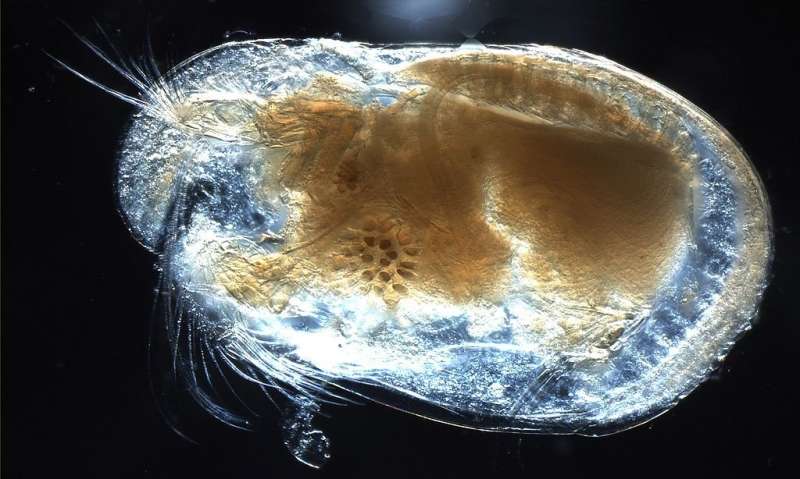Tiny, ancient fossil shows evidence of the breath of life

An international team of scientists from Leicester, Yale, Oxford and London has discovered a rare and exceptionally well-preserved tiny crustacean in 430 million-years-old rocks in Herefordshire, UK. The fossil is a new species of ostracod, a relative of crabs and shrimps and is just a few millimetres long.
This particular fossil preserves not just the animal's hard shell but also its limbs, eyes, gut and gills. Examples of exceptional preservation in ostracods, in which soft-parts are also preserved in the fossil record, are exceedingly rare. The respiratory system includes five pairs of gills with canals that in life conveyed essential fluids. The implication is that a heart had likely evolved in representatives of this common group of micro-crustaceans by at least 430 million years ago
The specimen has been given the name Spiricopia aurita, from the Latin words for 'breath of life', 'abundance' and 'ears'.
Professor David Siveter, from the University of Leicester's School of Geography, Geology and the Environment, said: "This is an exciting and rare find, in which the soft parts of the animal are preserved as well as its shell. In almost all cases such fleshy structures are denied to the fossil record. It gives us a tantalising window into the palaeobiology of the animal and here yields knowledge about important organ-systems and associated metabolic activities in what is a widespread group of fossil and living arthropods."
lived in a sea that covered much of southern Britain and beyond during the Silurian period (about 443-420 million years ago). An influx of volcanic ash entombed the animals living there and they were fossilised and preserved intact within hard calcareous nodules.
The fossil was recovered from its host rock using a digital reconstruction technique that involves grinding down the actual fossil and rock, layer by wafer-thin layer, and then producing a virtual fossil. The research has been published in the Royal Society journal Biology Letters.
More information: David J. Siveter et al. A well-preserved respiratory system in a Silurian ostracod, Biology Letters (2018). DOI: 10.1098/rsbl.2018.0464
Journal information: Biology Letters
Provided by University of Leicester





















